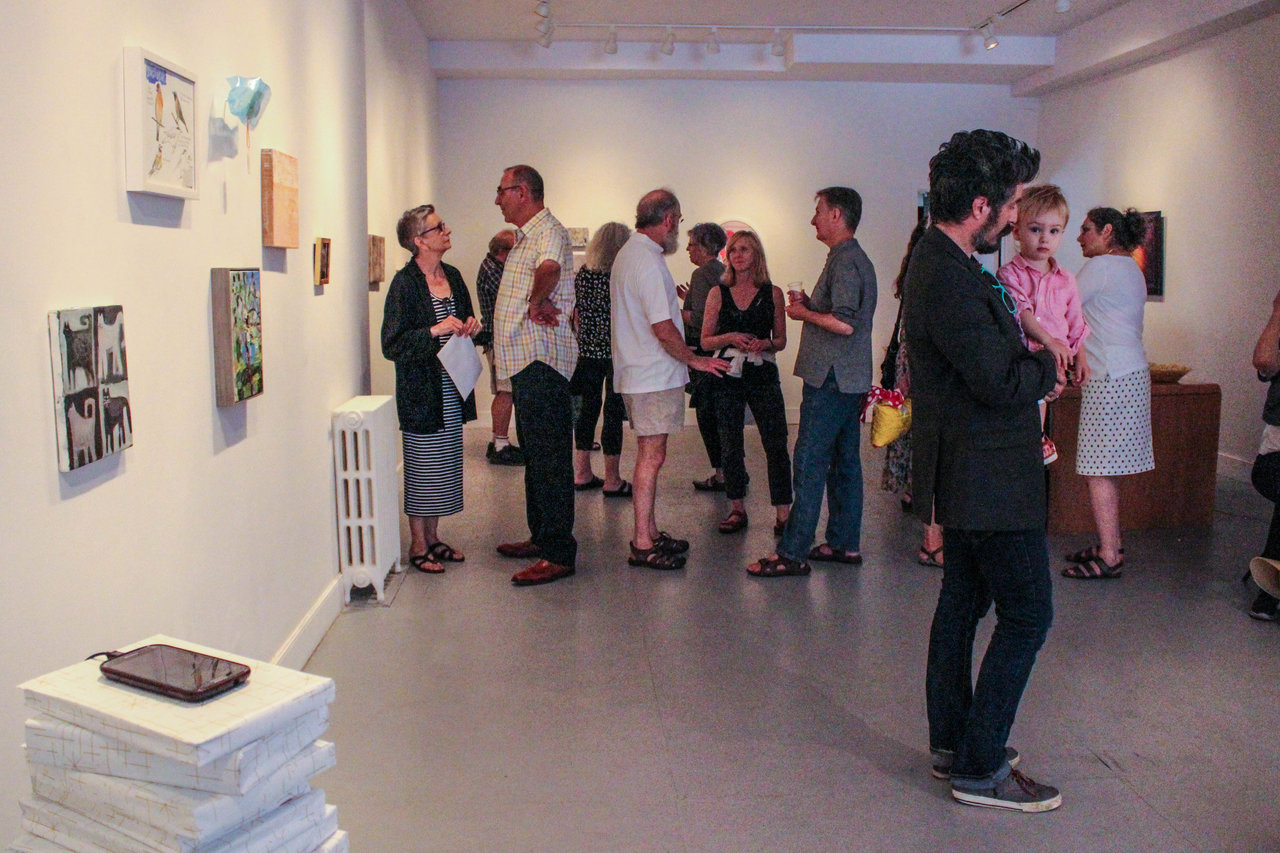 Sweet Summer Sixteen, Opening Reception at loop, July 16, 2016
Sweet Summer Sixteen, Opening Reception at loop, July 16, 2016
Turning sixteen is a big deal. Each year you get bigger, smarter, and stronger—and achievements like that are worth celebrating. Sweet Summer Sixteen, a group exhibition showcasing the work of thirty-one loop Gallery members, is a coming-of-age tale. A reminder of loop’s growth from humble beginnings in Queen West to its exciting formative years in Dundas West, this exhibition demonstrates the power of an arts based community.
Displaying a diversity of conceptual and aesthetic works, from P. Roch Smith’s “Branch Rifle” to Rochelle Rubenstein’s “Welcome Skirt”, Sweet Summer Sixteen kept you on your toes. Transformed into a tasting sampler for two weeks, the exhibition served as a visual narrative for the gallery’s unique history. Tracing their roots to the beginning of the millennia, loop has had an active role in shaping artist-run culture in Toronto. Speaking with the founders of loop Gallery, Catherine Beaudette and Richard Mongiat, this article chronicles their ingenuity and perseverance in shifting power back into the hands of artists, redefining artist-gallery relationships in the city.
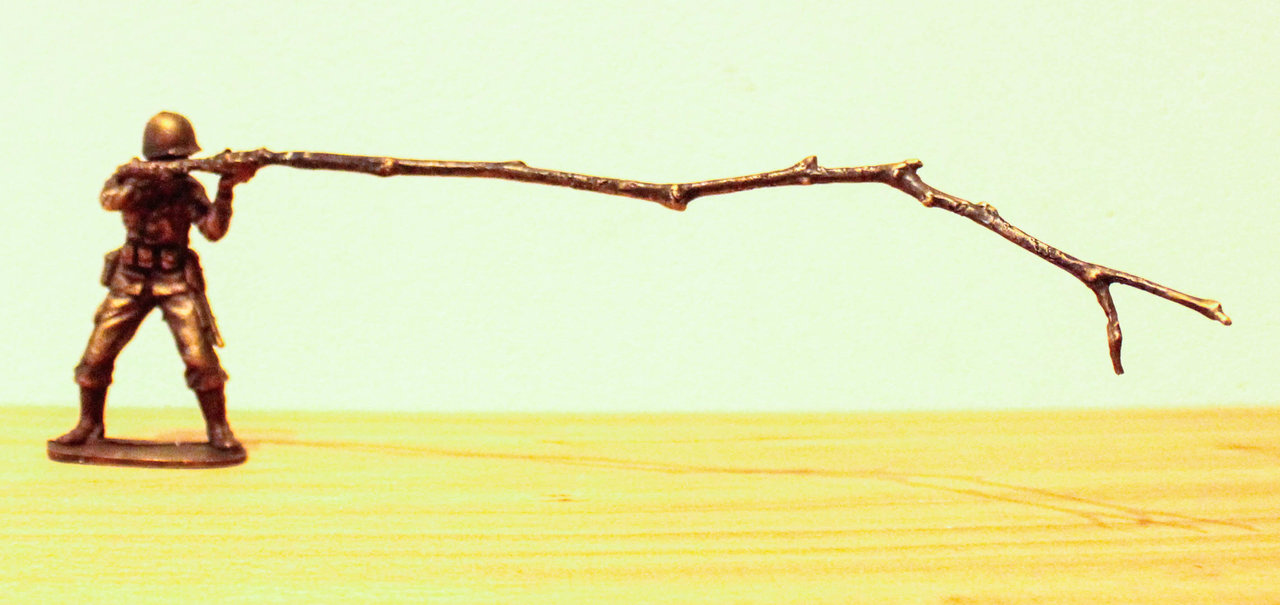 P. Roch Smith, Branch Rifle, 2016, branch on wood shelf, 16″ x 6″ x 5″. Photo: Megan Kee
P. Roch Smith, Branch Rifle, 2016, branch on wood shelf, 16″ x 6″ x 5″. Photo: Megan Kee
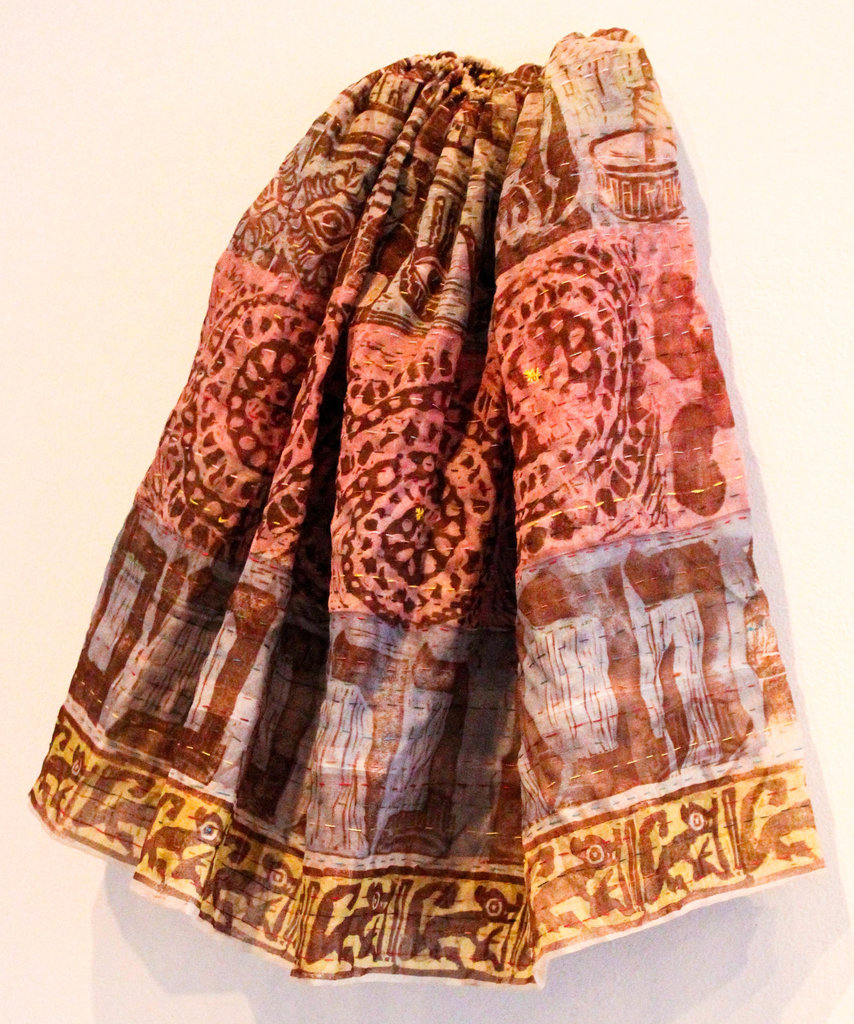 Rochelle Rubenstein, Welcome Skirt, 2014, block printed, painted, and embroidered, 21” x 21”. Photo: Megan Kee
Rochelle Rubenstein, Welcome Skirt, 2014, block printed, painted, and embroidered, 21” x 21”. Photo: Megan Kee
The Early Years
Coming off the heels of the late 80s early 90s recession, cheap display space in Toronto became abundant, giving rise to “an explosion of collectives during that decade” (Mongiat). Before opening loop, Beaudette and Mongiat organized collective shows throughout the city, which involved weeks, if not months, of planning for only a three-week show. Rent had become normalized by the beginning of the millennia, but since Queen West was still “stigmatized by the mental health centre, drugs and prostitution” (Mongiat), rent in the area was relatively inexpensive. Beaudette proposed the notion of a membership operated gallery, which would allow flexibility and freedom for artists looking to manage as well as produce content.
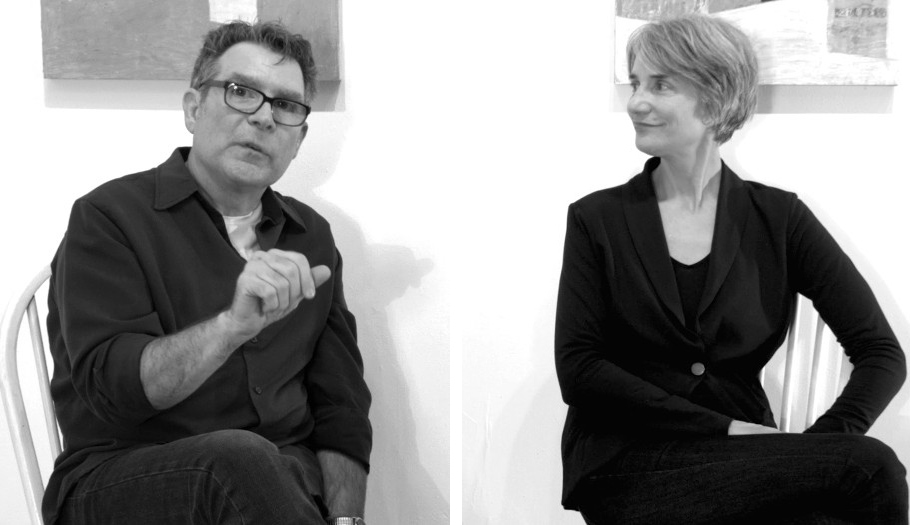 Richard Mongiat and Catherine Beaudette, stills from the documentary film about loop. Courtesy of Richard Mongiat.
Richard Mongiat and Catherine Beaudette, stills from the documentary film about loop. Courtesy of Richard Mongiat.
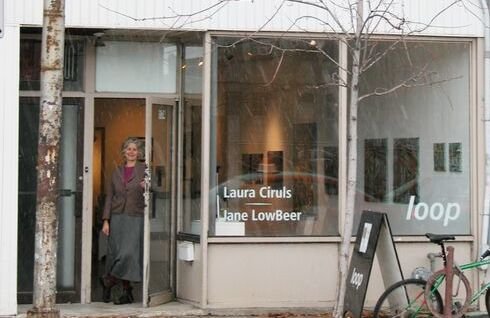 loop on Queen Street West. Courtesy of loop Gallery
loop on Queen Street West. Courtesy of loop Gallery
Extending invitations to practicing artists, who were each in-turn asked to invite two peers, the gallery collective of twenty professional artists was born. Contributing to the three-decade long history of artist-run culture in North America, loop Gallery opened in 2000 in the burgeoning neighbourhood of Queen West. Allowing artists to run their own shows, unencumbered by policy, rules, and regulations, loop provided an alternative to the dominant commercial and major institutional structures of the past century. loop Gallery’s inaugural exhibition was a group show featuring the founding members, which introduced the breadth of talent under loop’s umbrella. It was this strength and diversity that initially attracted professional artist David Holt. He has been a member of the gallery since 2005. Organizing—and exhibiting in—Sweet Summer Sixteen, Holt considers loop “a serious peer-reviewed venue with a solid reputation for exhibiting work, as well as a platform for artist talks, discussions, and other activities.” While loop does not provide the active promotion of a commercial gallery, it is the collaboration, agency and sense of community that draw artists to its doors.
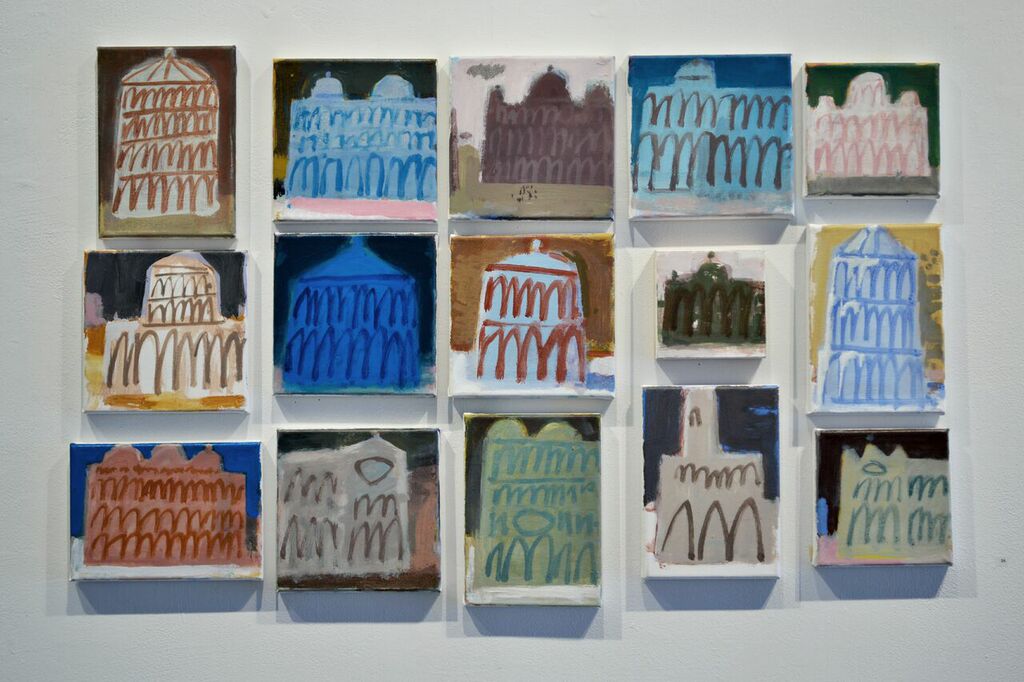 David Holt, Fifteen Ancient Buildings, 2014, Acrylic on canvas/wood, varied dimensions from his show, Arcadia, April 25 – May 17, 2015. Photo: Simon Termine
David Holt, Fifteen Ancient Buildings, 2014, Acrylic on canvas/wood, varied dimensions from his show, Arcadia, April 25 – May 17, 2015. Photo: Simon Termine
The biggest challenge for the gallery came in 2008, when the membership began noticing the rapid gentrification of Queen West. Recognizing that they could no longer afford to stay where they were, loop had to be proactive and look for alternative spaces. Their migration north to Dundas West in 2009 had an unexpectedly positive outcome in light of the move, which was that renovating and managing a new space gave the constantly evolving membership a renewed sense of community.
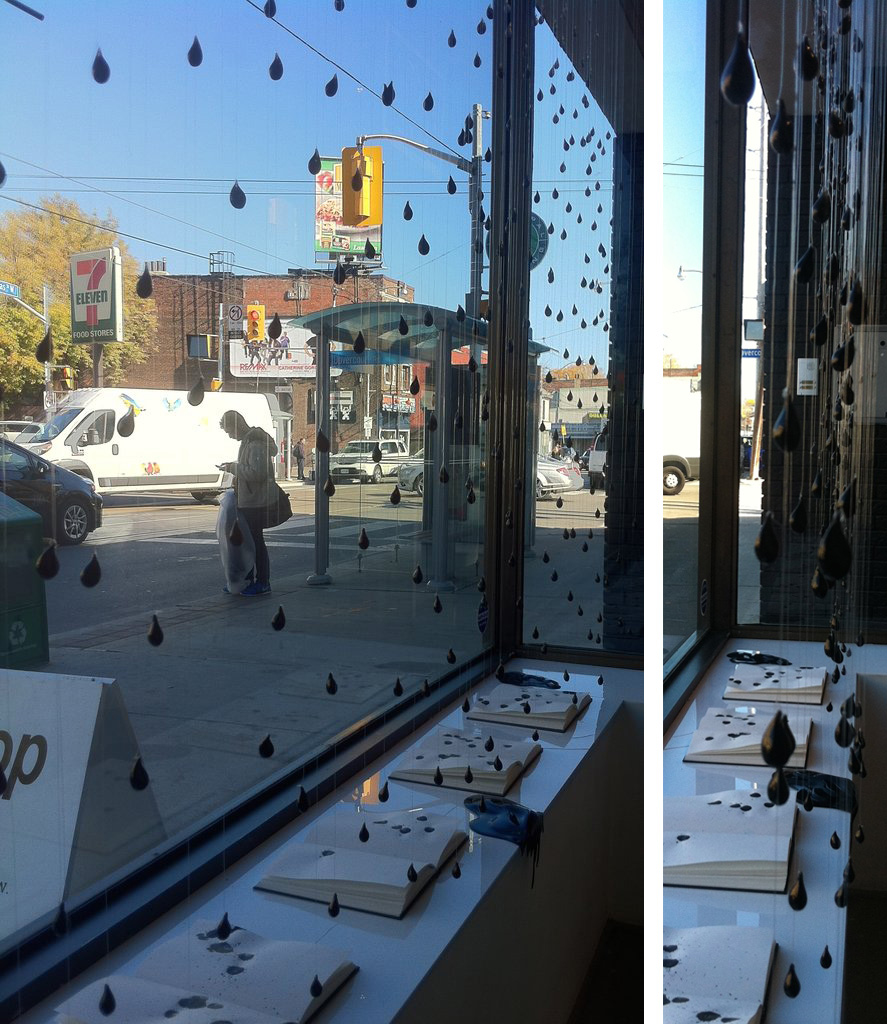 Jenn Law, Means & Ends, Installation view from front of the gallery and from sideway, October 10 – November 15, 2015. Photo: Katie Armstrong
Jenn Law, Means & Ends, Installation view from front of the gallery and from sideway, October 10 – November 15, 2015. Photo: Katie Armstrong
Creating a Legacy
As a self-sustaining, collectively run space, loop Gallery differentiates itself from other artist-run centres in Toronto by financially supporting themselves through the monthly membership of their artists. By only charging a $65 monthly membership fee when the gallery first opened (now $130), as well as giving seventy-percent of profits from sold artworks to artists (as opposed to the usual 50/50 agreement in most commercial galleries), Loop redefined the artist-gallery relationship.
 Installation view of Libby Hague, Alone Together, December 6 – 28, 2014. Courtesy of the artist.
Installation view of Libby Hague, Alone Together, December 6 – 28, 2014. Courtesy of the artist.
While Sweet Summer Sixteen is a group exhibition, a key differentiating factor that has allowed loop to run economically—setting them apart from their predecessors—is the two-person solo show. Dual solo exhibitions allow loop to maintain higher membership numbers while concurrently showcasing their artists work on a frequent basis. Exhibiting artists side-by-side can lead to random and sometimes delightfully unexpected juxtapositions: “Sometimes they work together, sometimes they don’t” (Mongiat).
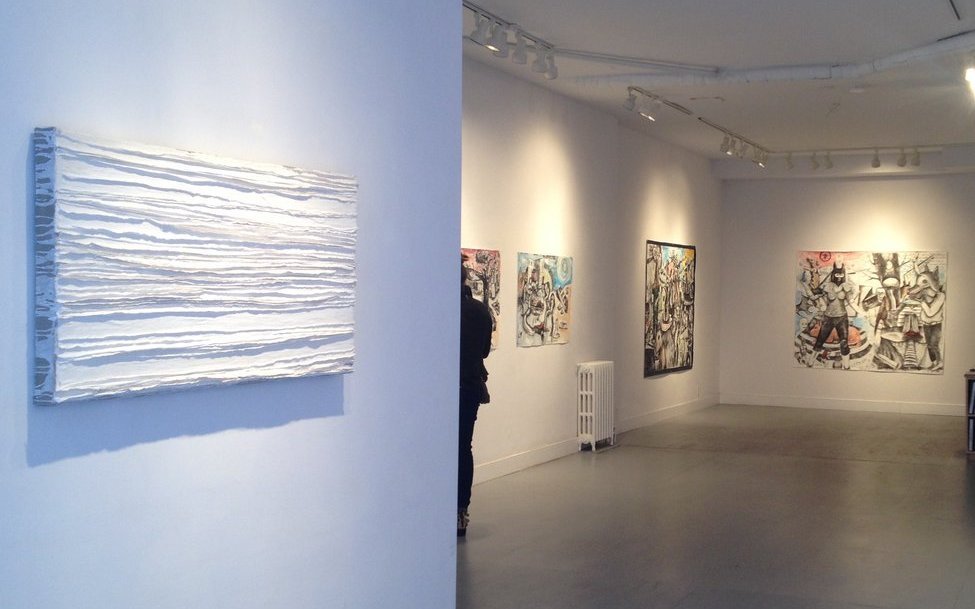 Sung Ja Kim-Chisholm’s textile composition (left) and paintings by Charles Hackbarth (right) in their dual show, October 11 – November 2, 2014. Photo: Carter Brown
Sung Ja Kim-Chisholm’s textile composition (left) and paintings by Charles Hackbarth (right) in their dual show, October 11 – November 2, 2014. Photo: Carter Brown
The membership-based artist collective has been a major success. Several founding members—John Abrams, Gary Clement and Candida Girling—are still with the gallery to this day (two of which exhibited in Sweet Summer Sixteen). Having collaborated with one another for sixteen years, the work of John Abrams and Gary Clement could not be more different. For this exhibition, Abrams displayed a work aptly titled “Netflix”, depicting a red Netflix logo printed on a white background, with a winding black line moving through the centre. Clement, who has an illustrative-cartoon style, exhibited a work depicting five different classifications of song birds with German titles, and was reminiscent of a page in a sketchbook. While Abrams explores new media through old media in his body of work, Clement comes from a diverse editorial background, having written and illustrated two children’s books. It is these unexpected juxtapositions that make loop so intriguing.
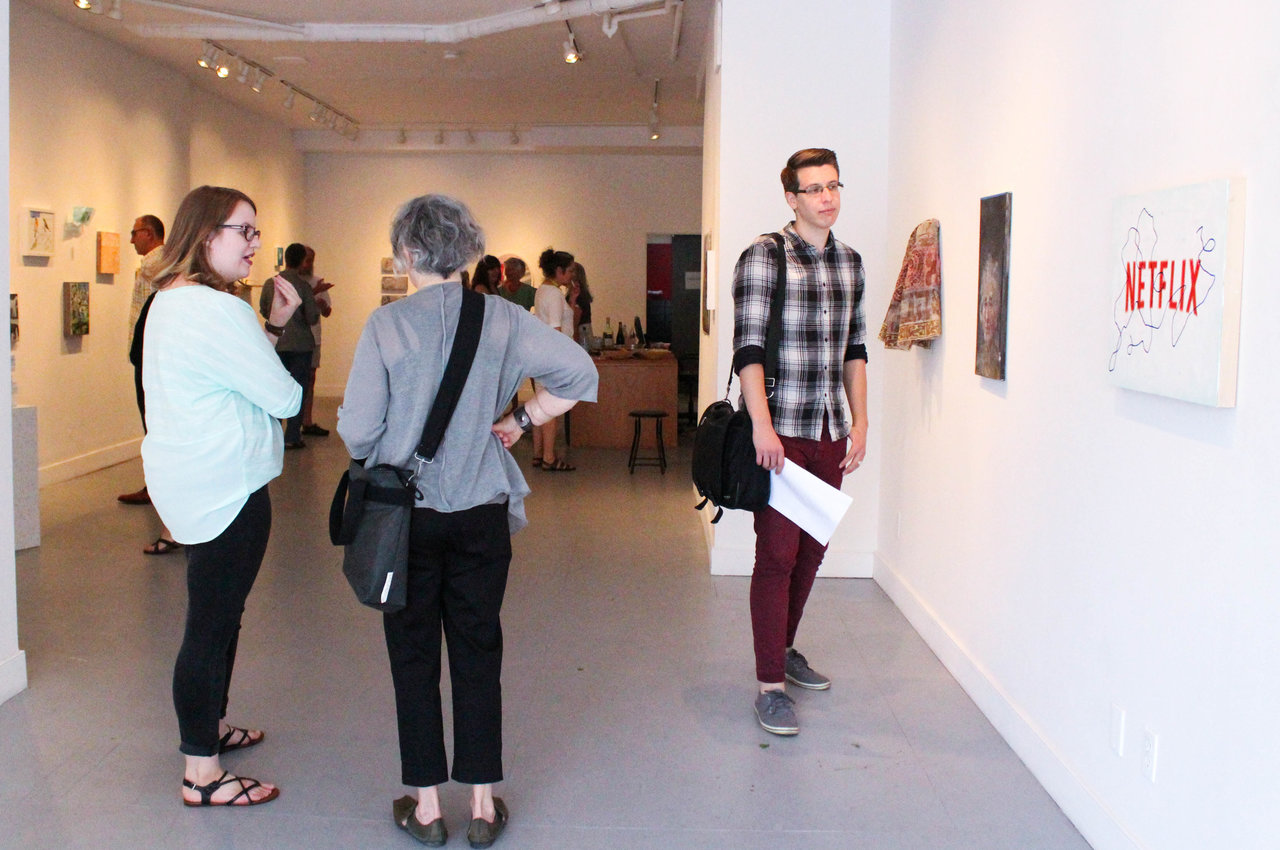 Installation view at the Opening Reception with John Abrams, Netflix, 2016, oil on panel, 18” x 24” (right). Photo: Megan Kee
Installation view at the Opening Reception with John Abrams, Netflix, 2016, oil on panel, 18” x 24” (right). Photo: Megan Kee
 Gary Clement, Singvogel, 2016, watercolour, pen, and ink, 15.25” x 12.25″. Photo: Megan Kee
Gary Clement, Singvogel, 2016, watercolour, pen, and ink, 15.25” x 12.25″. Photo: Megan Kee
Half of the excitement is never knowing exactly what you are going to see. Through submission reviews every 18 months, the membership reflects the criteria of the committee at the time. While loop Gallery could have structured itself around more consistent content, Beaudette explained that that is by no means a disadvantage: “It shows the heterogeneous nature of art practice today. The goal is not to have a look but a premise.” An inherent part of that premise is to let members have agency over the production of their work. While most artist-run centres rely predominantly on government grants, qualifying often means adhering to certain programming guidelines, which can feel limiting for artists. loop’s platform for innovation is what makes it so attractive to artists.
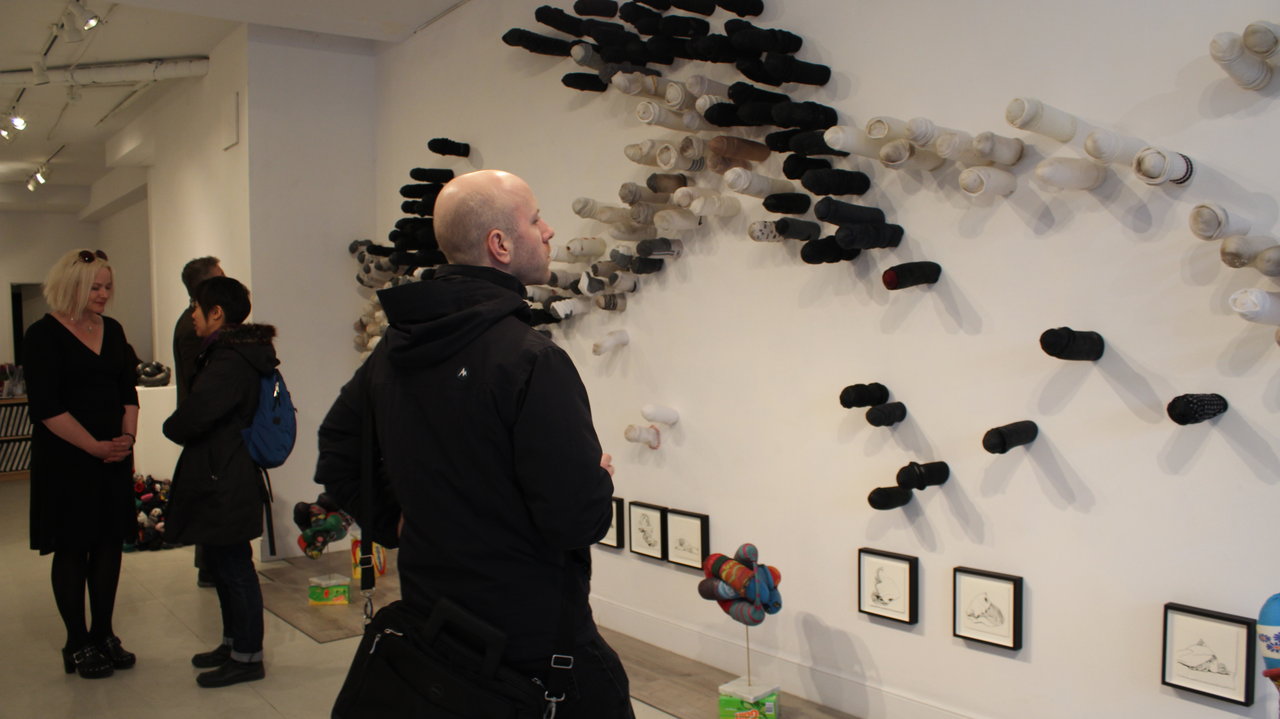 Installation view of Kim Stanford, Dirtier, March 1 – 23, 2014 with the artist on the left. Photo: Duke Ringrose
Installation view of Kim Stanford, Dirtier, March 1 – 23, 2014 with the artist on the left. Photo: Duke Ringrose
Gareth Bate has been a member of loop Gallery since 2010. Highlighted in the new video series Collective City, which chronicles the history of Toronto’s artist-run culture since the 70s, Bate explained: “I wanted a place to show where I didn’t have any pressure to be any particular kind of artist, I can just do whatever I want in that show.” It is that kind of atmosphere that privileges art for arts sake.
Sweet Summer Sixteen was an alteration in perspective. Not since the formation of the Salon des Refuses has a movement so strongly impacted the structural identity of the art world quite like artist run culture. Constantly evolving and taking on the identity of the current membership, loop Gallery acts as a blatant reminder that the hierarchical system by which art has adhered for centuries is only one among dozens of strategies for managing visual art. Revealing thought-provoking juxtapositions and unexpected parallels between artists’ work, loop’s collective-gallery structure has shifted power back into the hands of the artists. Redefining the archetypal gallery model, loop still stands to this day because of the memberships vision, dedication and because “artists still need a sense of community” (Mongiat).
Megan Kee
* loop Gallery, 1273 Dundas Street West, Toronto. Gallery hours: Wed – Sat 12 – 5, Sun 1 – 4 p.m.
